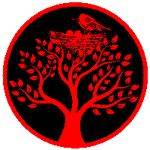https://www.dropbox.com/scl/fi/gkfcfqc6gs14invoeg6hn/KanzanHakogaki.pdf?rlkey=5i89f80fkbbf60x67f1lloa2k&st=zfh4ao27&dl=0
I'm not sure where it would be more appropriate to post this — in the Translation Assistance section or in Tosogu (please, Brian, place it wherever you find most suitable).
I’ve compiled a short collection of transcriptions (kanji + romanization) of some tsuba hakogaki from Satō Kanzan.
Although the examples I’m presenting are among the best-documented ones I could find online, I’m far from confident that the transcriptions provided are reliable. All the text shown in black should be reasonably accurate; the text in red is, at best, an educated guess; and I’ve marked with red stars the characters whose transcription I’ve no idea about. Some inconsistencies are evident and may perhaps be attributed to likely forgeries of the hakogaki.
For each hakogaki, I’ve included the website link from which I took the images, which I believe should serve as proper credit to the original owners. Of course I’m ready to remove any material upon request from the rightful holders. In any case, this is entirely non-profit, and I am not a professional in this field.
I would be very happy if forum members wished to contribute with comments, corrections, additions, or perhaps even further examples of hakogaki by sharing images from their own collections. I intend to release a final, corrected version here on the NMB forum within about a month or so.
Thank you for reading.








